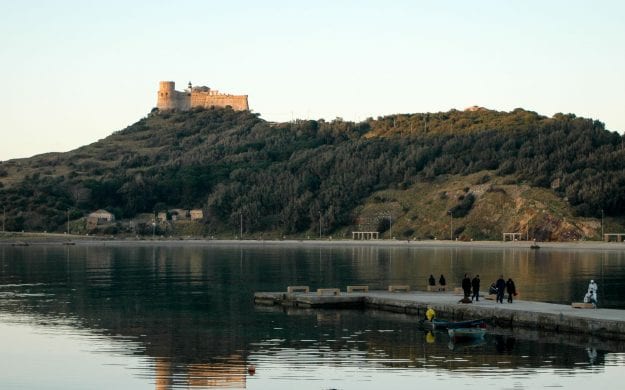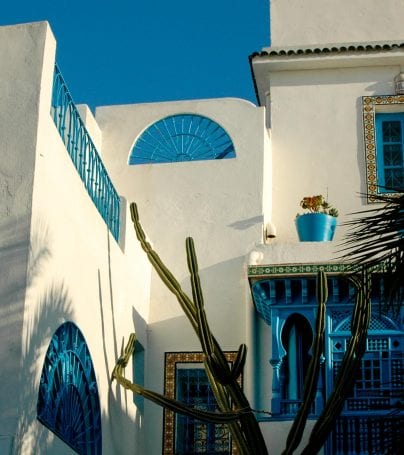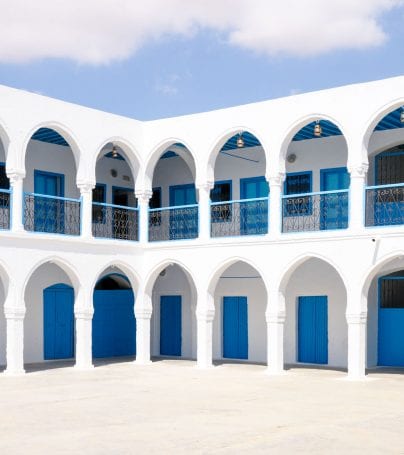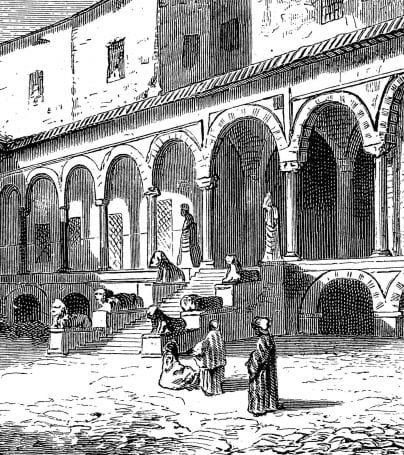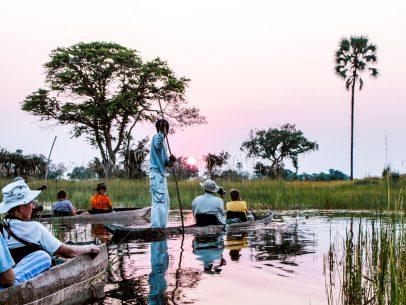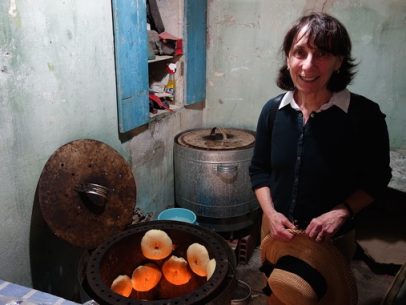Tunis Adventure Tours
Tunis is the capital of the Tunisian Republic and also the Tunis Governorate, with a population of 728,453 in 2004. Informal estimates state that the population of greater Tunis approaches two million. Situated on a large Mediterranean gulf, (the Gulf of Tunis), behind the Lake of Tunis and the port of La Goulette (Halq al Wadi), the city extends along the coastal plain and the hills that surround it. At the centre of more modern development (colonial era and post) lies the old medina. Beyond this section lie the suburbs of Carthage, La Marsa, and Sidi Bou Said. The medina is found at the center of the city: a dense agglomeration of alleys and covered passages, full of intense scents and colors, boisterous and active trade, a surfeit of goods on offer ranging from leather to plastic, tin to the finest filigree, tourist souvenirs to the works of tiny crafts shops.
Just through the Sea Gate (also known as the Bab el Bahr and the Porte de France), begins the modern city, or Ville Nouvelle, transversed by the grand Avenue Bourguiba (considered by many to be the Tunisian Champs-Élysées), where the colonial-era buildings provide a clear contrast to smaller older structures. As the capital city of the country Tunis is the center of Tunisian commercial activity, as well as focus of political and administrative life in the country. The expansion of the Tunisian economy in the last decades is reflected in the booming development of the outer city where one can see clearly the social challenges brought about by rapid modernization in Tunisia.
Tunis is located in northeastern Tunisia on the Lake of Tunis, and is connected to the Mediterranean sea’s Gulf of Tunis by a canal which terminates at the port of La Goulette/Halq al Wadi. The ancient city of Carthage is located just north of Tunis along the coastal part.
The medina of Tunis has been a UNESCO World Heritage Site since 1979. The medina contains some 700 monuments, including palaces, mosques, mausoleums, madrasas, and fountains dating from the Almohad and the Hafsid periods. These ancient buildings include
- the Great Mosque (including the Muslim University and library)
- Aghlabid Ez-Zitouna Mosque (“Mosque of the Olive”) built in 723 by Obeid Allah Ibn-al-Habhab to celebrate the new capital.
- the Dar-al-Bey, or Bey’s Palace, comprises architecture and decoration from many different styles and periods and is believed to stand on the remains of a Roman theatre as well as the tenth century palace of Ziadib-Allah II al Aghlab.
Other landmarks:
- The Bardo Museum was originally a 13th century Hafsid palace, located in the (then) suburbs of Tunis. It contains a major collection of Roman empires and other antiquities of interest from Ancient Greece, Tunisia, and from the Arab period.
- The ruins of Carthage are nearby, along the coast to the northeast
Customize Your Dream Adventure
We are here to help craft tailor-made adventures for individuals, couples, families, and groups of explorers.

